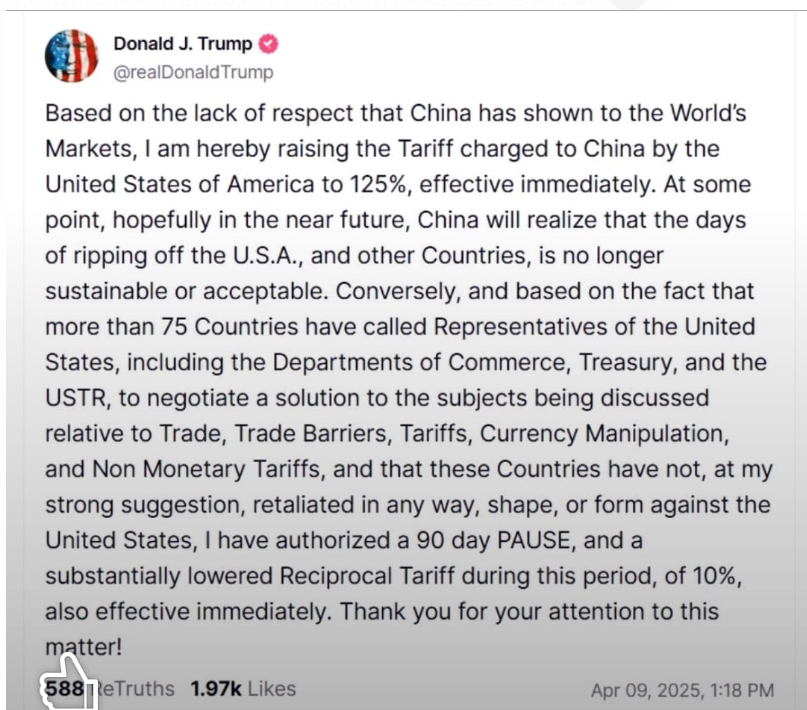
The US dollar index is recovering from most of its losses today
The US Dollar Index (DXY) rose on Wednesday, after coming under pressure as the trade dispute between the United States and China widened after China imposed tariffs of 84% on US goods today in response to the imposition of US tariffs of 104% on Chinese goods, reducing its status as a reserve currency and prompting some foreign investors to liquidate their dollar assets.
However, the dollar recovered from its worst levels on Wednesday after President Trump announced a 90-day suspension of reciprocal tariffs on 56 countries, but raised tariffs on China from 104% to 125% in response to its response to US tariffs.
The dollar also rose after the hawkish statements of Federal Member Kashkari, who said that it has become more difficult to change the interest rate on federal funds in one way or another due to tariffs, and that the likelihood of the Fed lowering interest rates in the face of tariffs is lower due to their inflationary impact, even if the economy begins to deteriorate.
The minutes of the Federal Open Market Committee (FOMC) meeting on March 18 and 19 also hinted at stagflation, and it was negative for the dollar, as the minutes of the meeting showed that most Fed officials saw that inflation risks tend to rise and employment risks tend to decrease.
Uncertainty may also weaken consumption, and a cautious approach is the best solution in light of policy uncertainty, so the markets exclude the likelihood of a 25 basis point cut in interest rates after the FOMC meeting on May 6 and 7, which amounted to 20%.
US Treasury Secretary Scott Besant confirmed in an interview with Fox News Channel that the United States continues to pursue a strong policy towards the dollar.
Benchmark 10-year U.S. Treasury bond yields also trimmed their gains after the Treasury saw strong demand for a USD 39 billion bond sale on Wednesday. The yield on the benchmark US 10-year US10Y Treasury bond rose by 13.6 basis points to 4.392%.












